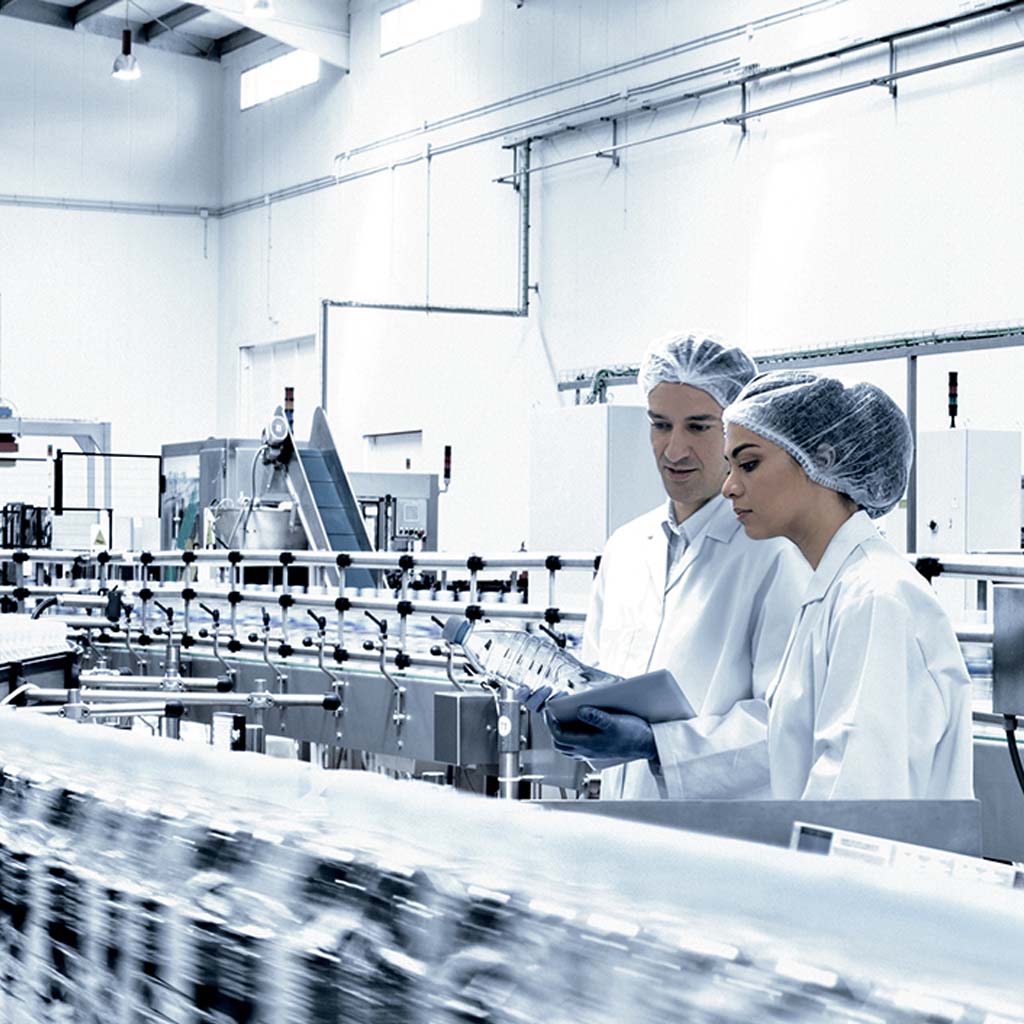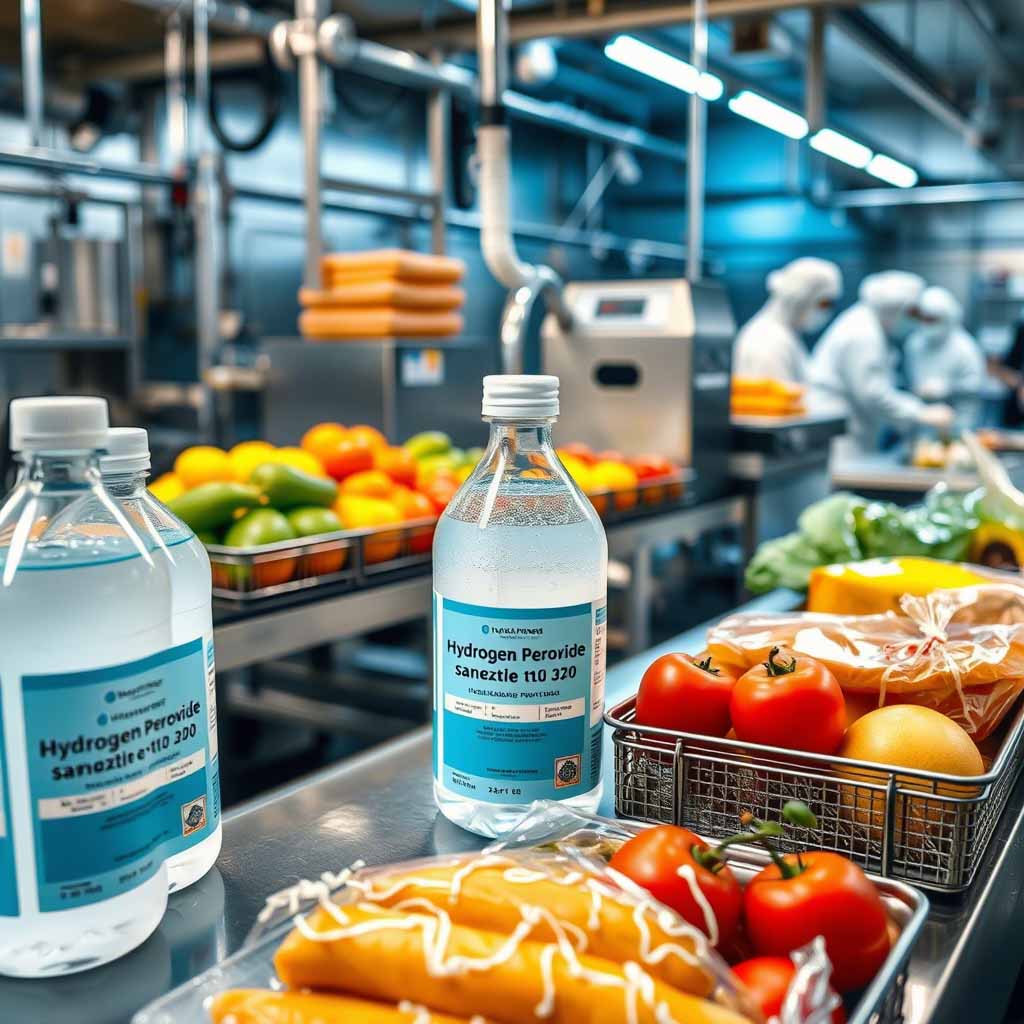Hydrogen Peroxide and the Food Industry have a significant relationship due to its versatile applications. As a powerful oxidizing agent, hydrogen peroxide helps with cleaning, sanitizing, and even bleaching, ensuring higher food safety standards. Its ability to decompose into water and oxygen makes it an environmentally friendly option. This compound also contributes to extending the shelf life of food by reducing microbial contamination. In this article, we will discuss how Hydrogen Peroxide and the Food Industry intersect, exploring its various uses and the advantages it offers for food quality, safety, and sustainability.
Click to use Silverigroup personal shopper services
The Role of Hydrogen Peroxide in Food Safety and Sanitation
Hydrogen peroxide plays a crucial role in food safety and sanitation by acting as an antimicrobial agent. It is highly effective in eliminating harmful microorganisms, such as bacteria, viruses, and fungi, from food contact surfaces and equipment. By breaking down into water and oxygen, it provides a safe, non-toxic alternative to other chemical disinfectants. Food processors often use hydrogen peroxide to sanitize processing environments, ensuring that the food remains safe for consumption. Additionally, hydrogen peroxide is used in the cleaning of fruits and vegetables, reducing the risk of contamination from pathogens such as E. coli or Salmonella.
How Hydrogen Peroxide Enhances Food Preservation and Shelf Life
Hydrogen peroxide significantly enhances food preservation and extends shelf life. Its antimicrobial properties help inhibit the growth of spoilage microorganisms, such as molds, yeasts, and bacteria, thereby slowing down food degradation. By controlling microbial growth, hydrogen peroxide contributes to maintaining the quality and safety of perishable items. It is often used in combination with other preservation methods, such as vacuum sealing or refrigeration, to improve efficacy. Hydrogen peroxide also helps preserve the color and texture of food by preventing oxidation, making it an essential tool in the food industry for preserving fresh produce, meats, and dairy products.
Click to buy citric acid from Silvairgroup
Applications of Hydrogen Peroxide in Food Processing
Hydrogen peroxide finds numerous applications in food processing, from cleaning and sanitizing to enhancing the appearance of food products. In food production, it is used to bleach products such as flour, starch, and cheese, helping to improve their appearance and remove undesirable color. Hydrogen peroxide is also employed in the production of juice and other beverages, where it assists in the clarification process by breaking down cloudiness and removing impurities. Furthermore, hydrogen peroxide is used in sterilizing packaging materials to ensure contamination-free products. Its versatility and effectiveness make it a valuable tool in various stages of food processing.

Hydrogen Peroxide as an Effective Food Disinfectant
Hydrogen peroxide is widely regarded as a powerful food disinfectant due to its ability to neutralize a broad spectrum of pathogens. It is particularly effective in eliminating bacteria, viruses, and mold that can contaminate food during processing and storage. Hydrogen peroxide’s antimicrobial properties make it ideal for disinfecting food-contact surfaces, equipment, and even fruits and vegetables. Additionally, it helps reduce the presence of pesticides on produce by breaking down residues during washing. As a food-grade disinfectant, hydrogen peroxide offers a safer and more environmentally friendly alternative to harsher chemical sanitizers, promoting a cleaner and healthier food supply chain.
Click to buy Beluga Fresh Frozen from Silverigroup
The Benefits and Risks of Using Hydrogen Peroxide in the Food Industry
Hydrogen peroxide offers significant benefits in the food industry, such as enhancing food safety, preservation, and sanitation. However, its use comes with certain risks, including potential damage to food and health concerns if misused. In this section, we explore both the advantages and risks of the hydrogen peroxide.
Regulations and safety guidelines for using hydrogen peroxide in the food industry are critical to ensure both food safety and public health. The U.S. Food and Drug Administration (FDA) regulates the use of hydrogen peroxide as a food additive, primarily for sanitizing and food processing applications. It is classified as generally recognized as safe (GRAS) when used in low concentrations. However, strict limits are set on its usage, with concentrations typically ranging from 3% to 6% for food-related applications. In food processing, it must be thoroughly rinsed or neutralized to prevent harmful residue. Additionally, producers must adhere to local food safety laws and international standards. Proper handling is essential to avoid skin and eye irritation, and employees should be trained on safe practices. Compliance with regulations ensures the safe, effective use of hydrogen peroxide in food production without compromising quality or consumer health.
The Future of Hydrogen Peroxide in Food Industry Innovations
The future of hydrogen peroxide in the food industry is promising, with ongoing innovations aimed at improving food safety, preservation, and processing. As technology advances, hydrogen peroxide’s role in food processing is likely to expand, particularly in areas like packaging and sustainable food production. New methods of utilizing hydrogen peroxide for sterilization and disinfection are being developed, ensuring better sanitation practices without harmful residues. Additionally, more efficient and eco-friendly applications are emerging, such as the use of hydrogen peroxide in natural food preservation to extend shelf life without the need for chemical preservatives.
Research is also exploring the potential of hydrogen peroxide in enhancing food quality by preventing microbial contamination in both raw and processed foods. In the future, innovations may lead to more precise and targeted use of hydrogen peroxide, maximizing its benefits while minimizing potential risks. The trend toward natural, non-toxic food treatment methods will likely boost hydrogen peroxide’s popularity, aligning with consumer demand for healthier, safer food products. Enhanced safety standards and improved formulations of hydrogen peroxide will ensure its continued relevance and usefulness in the evolving food industry.
Conclusion
Hydrogen peroxide plays a significant and evolving role in the food industry. Its versatile applications in food safety, preservation, and processing provide valuable solutions for improving food quality and extending shelf life. While its benefits are clear, proper regulations and safety guidelines must be followed to mitigate potential risks. The future of hydrogen peroxide in food production looks promising, as ongoing research and innovations continue to unlock new, eco-friendly applications. With the growing consumer demand for natural and safe food products, hydrogen peroxide is poised to be an essential tool in the advancement of sustainable food practices.
FAQs
Hydrogen peroxide is widely used in the food industry for sanitizing equipment, disinfecting surfaces, and enhancing food preservation. It also serves in washing fruits and vegetables to remove contaminants, as well as in food processing to control microbial growth.
Is 50% hydrogen peroxide food grade?
No, 50% hydrogen peroxide is not considered food grade. Food-grade hydrogen peroxide typically has a concentration of 35% or less. It undergoes a purification process to ensure it is safe for use in food-related applications.
What is food-grade hydrogen peroxide used for?
Food-grade hydrogen peroxide is used for various purposes, including food sterilization, disinfecting equipment, and preserving food. It helps in eliminating bacteria and pathogens, ensuring the safety and quality of consumable products.
Where to buy food-grade hydrogen peroxide?
Food-grade hydrogen peroxide can be purchased from specialty chemical suppliers, health food stores, or online marketplaces. It is essential to ensure the product is certified for food use and has the correct concentration (35% or less).
How to use food-grade hydrogen peroxide?
Food-grade hydrogen peroxide should be diluted before use, depending on the intended application. It is used to disinfect produce, sanitize equipment, and purify water. Always follow safety guidelines and consult instructions for proper dilution and handling.
What are hydrogen peroxide’s uses in industry?
Hydrogen peroxide is used in various industrial applications such as bleaching textiles, cleaning surfaces, and disinfecting equipment. In the food industry, it helps with microbial control and food preservation, while in other sectors, it’s used in manufacturing, paper, and wastewater treatment.
Why do doctors say not to use hydrogen peroxide?
Doctors advise against using hydrogen peroxide undiluted on wounds or internally because it can damage tissue. High concentrations may cause irritation or other side effects. Always consult a healthcare professional before using hydrogen peroxide for medical purposes.

